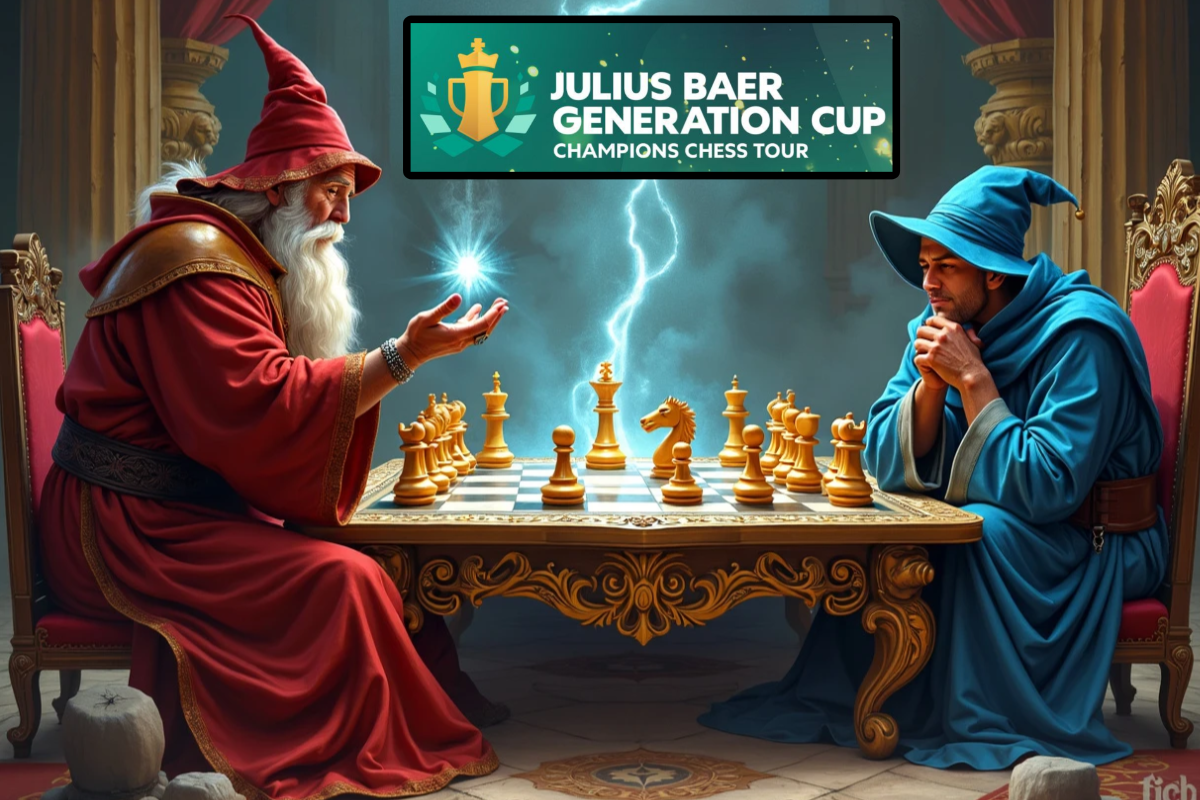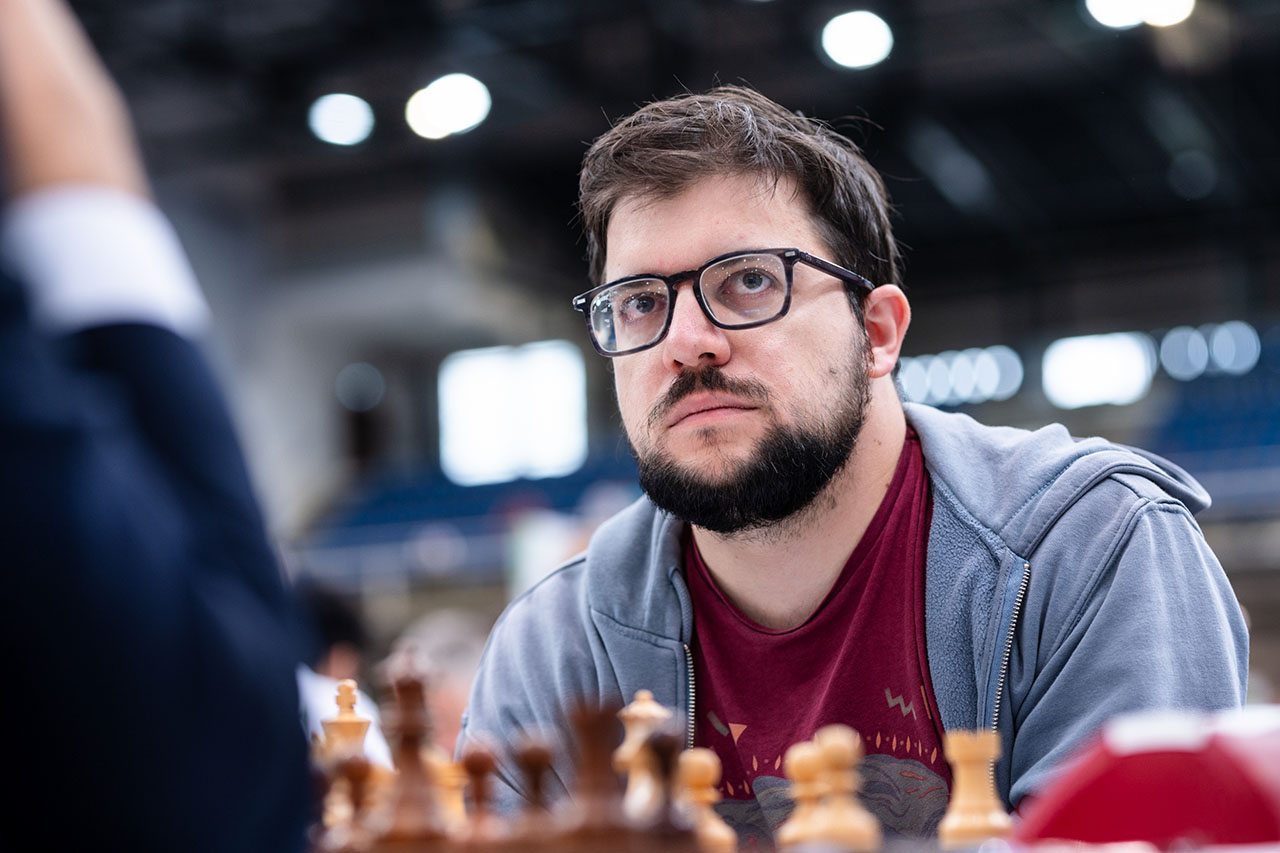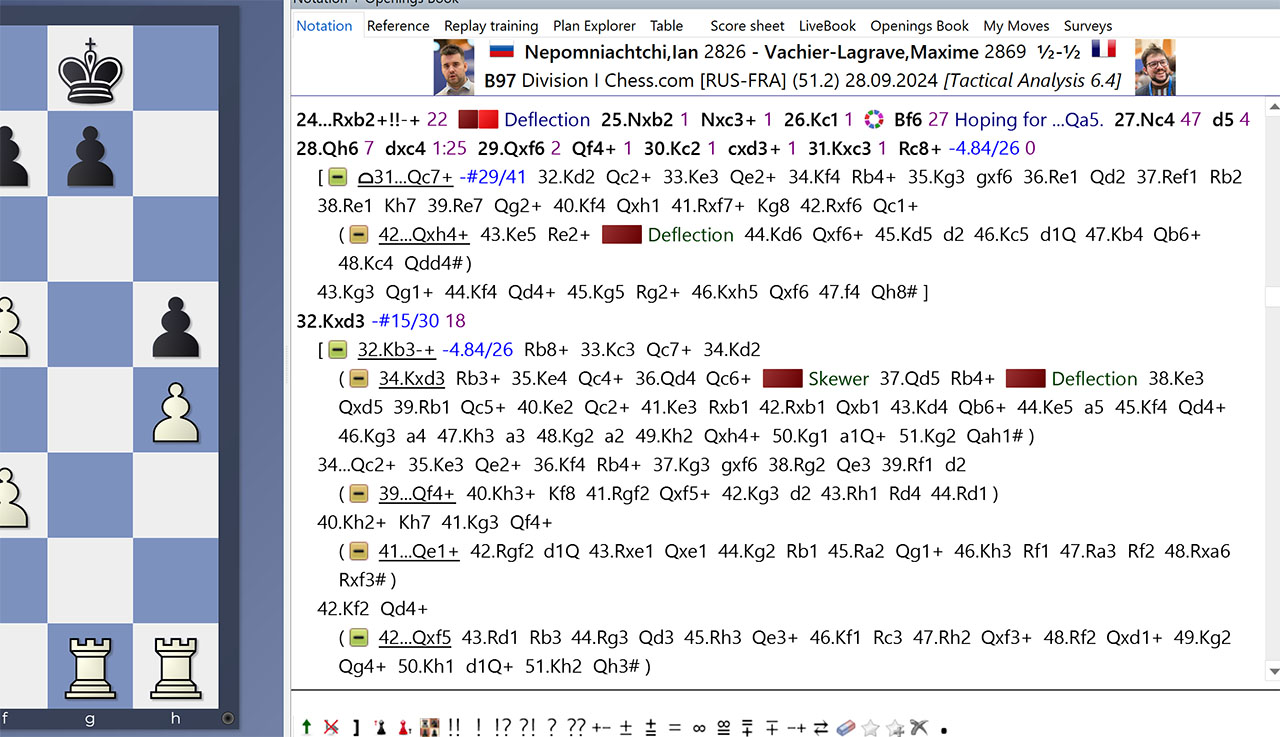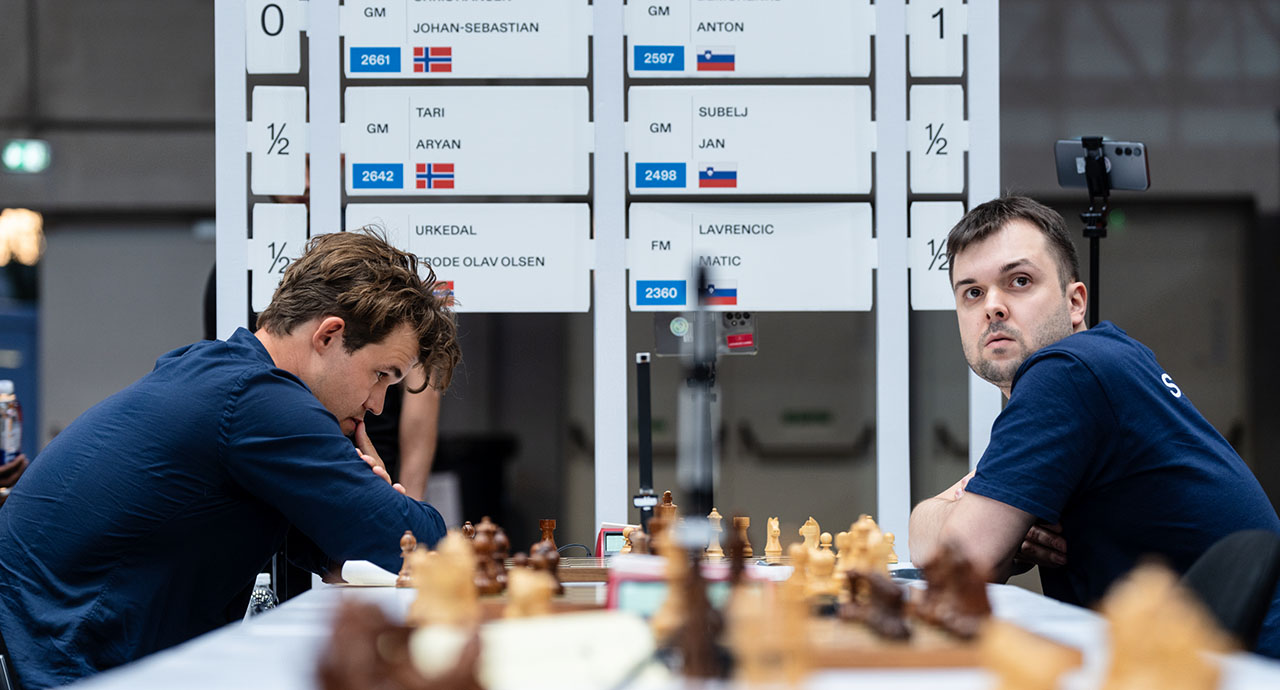


Following the action of such games can be riveting, and while rarely boring, nor are they necessarily knocking on the doors of chess perfection such as we saw by the Indian squad in the recent Olympiad. The more mistakes does mean that there will also be more opportunities for brilliancies. One of the best calculators and tacticians in the world elite, bar none, is the French prodigy and former world no.2, Maxime Vachier-Lagrave, who peaked at 2819 FIDE.

Continuing his good form from the Olympiad (above), Maxime Vachier-Lagrave was on fire in his match against Ian Nepomniachtchi (Photo: Maria Emelianova/chess.com)
While not quite able to leverage this into a victorious run in the Julius Baer 2024 event, he shone like a comet not once, but twice, streaking across the sky with brio and wonder. The first sample was both short and sweet:
This was the situation after an opening that promised nothing but boredom: a classic Petroff. GM Naroditsky in his live commentary described the opening as one you play when you hate yourself or chess. Harsh words, but the symmetry and balance tend to invariably lead to uneventful draws at the highest levels. Needless to say, both ultra dynamic players did not let such things stop them from finding ways to spice things up.
Black just played 27...Nc4 and with both rooks attacked White had little choice but to play 28. Rxe6 and Black's reply Nxa5 is forced. If instead he played 28. fxe6? White wins with 29. Qxg6! and after Nxa5 30. Ng5! there is no defense against the mate threats. For this same reason, after the mainline 28. Rxe6 Nxa5, when White played 29. Ng5! the rook is untouchable due to the threat of Qxg6 and mate, therefore 29...Rd6!
Note: The diagrams are all dynamic so by all means move the pieces around on them to better visualize.
Now is where things get really hairy:
Black correctly avoided taking on e6 and is now trying to neutralize the threats with 29...Rd6. How does White follow this up? Trade and with Qb5 win a pawn and grind it? Remove such vile ideas from your mind! The Frenchman played 30. Qg3!! leaving the rook hanging in its entirety. With the move now shown, you can see the idea easily enough. If 30...Rxe6 White now has the fantastic 31. Qh4! with the fatal threat of Qh7. If 31...Bd6 (to avoid mate in one) 32.Qh7+ Kf8 33. Qh8+ Ke7 34.Qxc8 wins the queen.
As a result, the two-time world title challenger, Ian Nepomniachtchi plays the only move available, 30...Qd8, even if he saw the writing on the wall. White must still show his last trump.
White could perfectly well play the straightforward 31.Qh4 which forces the win of the queen for knight and rook with 31...Qxg5 (only move) 32.Qxg5 Rxe6 33.Qxd5, and while winning it would would drag the game out for some bit yet. White had a better finishing blow and saw it too, 31. Re8!! Now if 31...Qxe8 32. Qh4! Qe4+ 33. Kg3 and mate is unavoidable, and if 31...Qxg5 32. Qxd6 is also an unavoidable mate.
It might seem hard to believe that lightning can strike the same place twice, but that is exactly what happened in the very next game of their mini-match, this time with MVL playing black.
Ian Nepomniachtchi may have scratched at 2800 and been twice challenger against Magnus Carlsen, but it must still be described as a brave choice to take on the Sicilian Najdorf Poisoned Pawn versus Vachier-Lagrave. Why brave? MVL is easily the foremost expert on these sharp Sicilians once championed by greats such as Kasparov and Fischer, so hoping for any form of opening advantage, if only in knowledge and understanding, is a non-starter.
It will come as no surprise that the game turned sour on him and Black built a winning position until this arose:
It is not hard to suspect or intuit there is a monster tactic available, but it is equally hard to go for it if you are unable to work out the main lines. The first powerhouse move is 24...Rxb2+!! but this gives up a full rook.
How long did MVL spend calculating this? 22 seconds. Most of us lesser mortals would be happy to work through chunks of it in 22 minutes, never mind 22 seconds. Think I am exaggerating? I ran this through Chessbase 17's Tactical Analysis. Normally, it produces a fairly well-behaved output, with a few sub-variations as seem needed.

This is what the pure untouched output looked like.
Those reams of lines are not me adding deeper analysis to try to understand what it was showing. That is what the software deemed the minimum necessary. This is merely to show just how incredibly complicated the trees of moves were that Black had to calculate or at least consider on an intuitive level. The clincher? MVL's play was picture perfect. He was in the zone.
A real tour-de-force by both players and while the Russian is clearly on the receiving end, he is not going down without a fight and himself plays the best defensive move as well. Two engines playing this out against each other could do no better. Black continued 25...Nxc3+ 26.Kc1. You might be inclined to think he can win the queen with a discovered check with 26...Ne4+? but White can interpose his queen with Qc2. There is no immediate crushing blow. The attack must now be sustained with the quiet move 26...Bf6!! There followed 27. Nc4 d5 28. Qh6 dxc4 29. Qxf6 Qf4+
The description neglects to add that White will end up a full rook... but down a full king. The game continued here 30. Kc2 cxd3+ 31. Kxc3 Rc8+ and here the engine informs us this is now a forced mate. White can do nothing so 32. Kxd3 Qxf3+ 33. Kd2 Qf2+ 34. Kd3
In this position, Black can wrap things up with 34...Qc2+ 35. Ke3 Re8+ and white must give up the queen with 36. Qe6 and more to delay being mated. Instead he repeated checks and tendered a draw. Why? He only needed the draw to win the match, and chose this last mercy to conclude it.
Mesmerizing play by Maxime Vachier-Lagrave I think you will agree.
This last is more illustrative of how even the most unpromising and boring position can bring about extreme excitement if the two players are both willing and uncompromising.
The following endgame was reached in the match between Arjun Erigaisi and Vladimir Fedoseev, both with heroic performances in the Olympiad. While Erigaisi's performance was one of the great highlights, precipitating him to within a sneeze's distance of 2800, Fedoseev, now playing for Serbia, took down Magnus Carlsen no less, and even missed a chance to mate him!

Vladimir Fedoseev pulled off the unthinkable: beating Magnus Carlsen with black in the Olympiad (Photo: Maria Emelianova/chess.com)
Funnily enough, there was no reason to expect anything from this game. After 23 moves this is what the board looked like:
The position looked so cut and dry that both GM commentators expected a quick shake of hands to then move on, or at the very least for the play to be unworthy of much attention with so little going on. Little could they imagine what the actual players would make of this.
The Indian had been pulling of miracles much as he had done in Budapest, and had reached this position:
He had a winning position and would have scored a brilliant win had he played 35. Rd1!, but time was against him, being a rapid game after all, and he began to go astray in the complications he had helped create.
Now Fedoseev seized his chance to save the game with the fantastic shot 36...Rxf6!!, but the drama in such a sharp position was not over. I leave you now in the good hands of GM Karsten Mueller.
| Advertising |